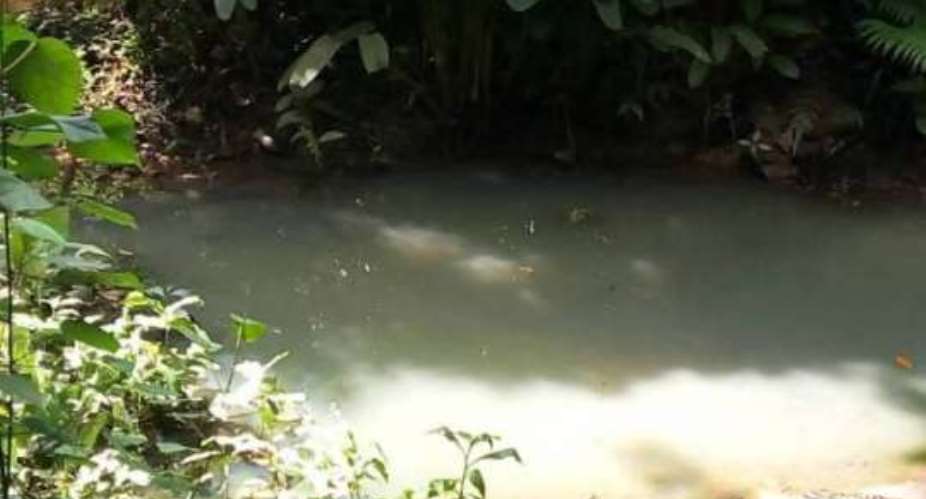The Domeabra community, made up of more than 500 inhabitants mainly farmers, continue to drink from streams, wells and other traditional sources of water with its associated water borne diseases.
The community's two boreholes have become a 'white elephant' since according to the inhabitants either produce inadequate water or was not tasting good to drink.
Mr Francis Benemah, a community leader, who took a team of Water and Sanitation Journalists around some Water, Sanitation and Hygiene (WASH) facilities in the community, revealed that 'the Stream 'Abena' was the best drinking water around.
These WASH facilities are mainly traditional or locally made with no modern schemes or interventions from the Municipal Assembly or companies operating in the area as a social investment project.
The team of Journalists from the Network of Water and Sanitation Journalists partnered the Hope for Future Generation, a local NGO, to undertake the community assessment under the Watershed project, which sought to empower the citizenry within the area for improved water, sanitation and integrated water resources.
According to Mr Benemah one of the boreholes could only produce an average of 40 buckets of water a day and the other which could run throughout the day was not tasty for drink and so community members had to rely on other water sources.
He said as a result the community members therefore have to travel for almost one kilometre to fetch water from a running stream under the shade of bamboos for drinking, cleaning and cooking among other household uses.
Meanwhile, these water sources were not protected and so waste and other human excreta from upstream easily made its way into such sources of drinking water with its resultant health implications.
The community had also managed to on its own construct two makeshift places of convenience that served both men and women around, to stop open defecation system.
The two facilities when inspected were not up to standard with the surroundings littered with papers as houseflies also engaged on the human excreta.
Interactions with some of the community members revealed that diarrhoeal diseases were common in the community due to the open sources of WASH facilities and the need to look at a modern way of meeting the sanitation and health needs of the community.
A Project Officer from the Hope for Future Generation and the team members after inspection of the facilities engaged the leadership of the community on the need for social accountability tools and how to secure some facilities for need assessment.
The elders were tutored on the need to engage their municipal technocrats and present their development challenges for attention as well as the use of scorecard to grade the level of services provided by the assembly.
GNA
By Mildred Siabi-Mensah, GNA





 People are celebrating their 80th birthday and Ghana owes GHS650 billion; who is...
People are celebrating their 80th birthday and Ghana owes GHS650 billion; who is...
 Beige-bank trial: Beige Bank disobeyed BoG — Prosecution
Beige-bank trial: Beige Bank disobeyed BoG — Prosecution
 NACOC staff arrested over cocaine smuggling
NACOC staff arrested over cocaine smuggling
 Controller and Accountant General resigns
Controller and Accountant General resigns
 Election 2024: Mute voices of politicians with 'sharp tongue' — Security Expert ...
Election 2024: Mute voices of politicians with 'sharp tongue' — Security Expert ...
 NDC opts out of Ejisu by-election
NDC opts out of Ejisu by-election
 Recommissioning of Ameri Power Plant an indication of clueless govt – NDC
Recommissioning of Ameri Power Plant an indication of clueless govt – NDC
 Love text message exposes pedophile
Love text message exposes pedophile
 Palm wine tapper kills wife over infidelity at Bogoso
Palm wine tapper kills wife over infidelity at Bogoso
 Dome Kwabenya: Mike Ocquaye washes woman panties for votes
Dome Kwabenya: Mike Ocquaye washes woman panties for votes
